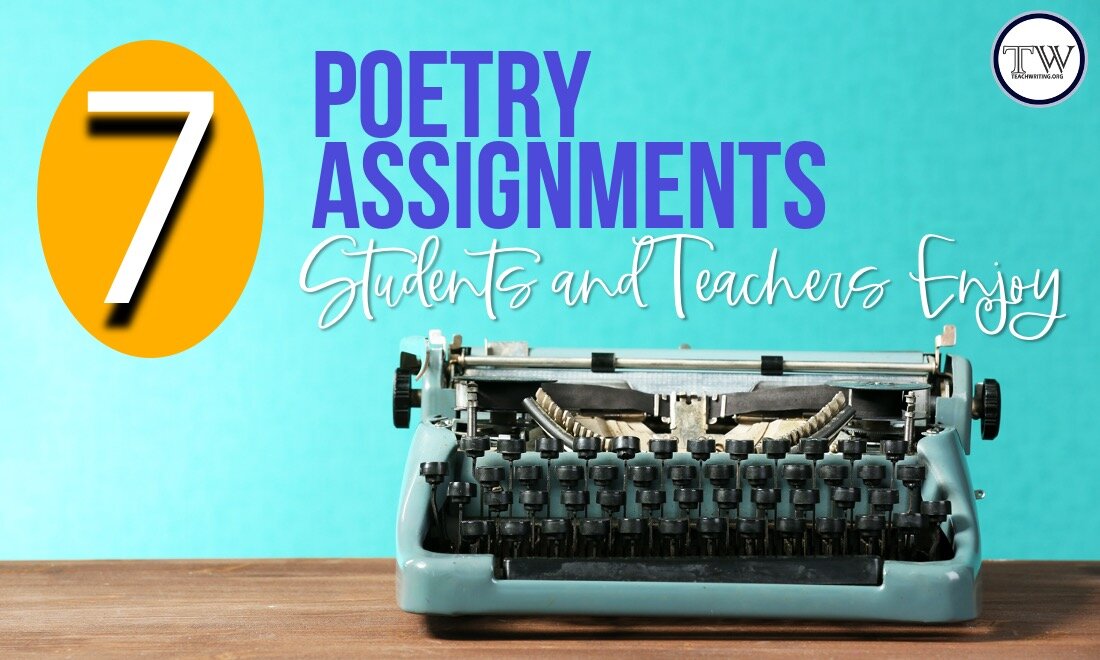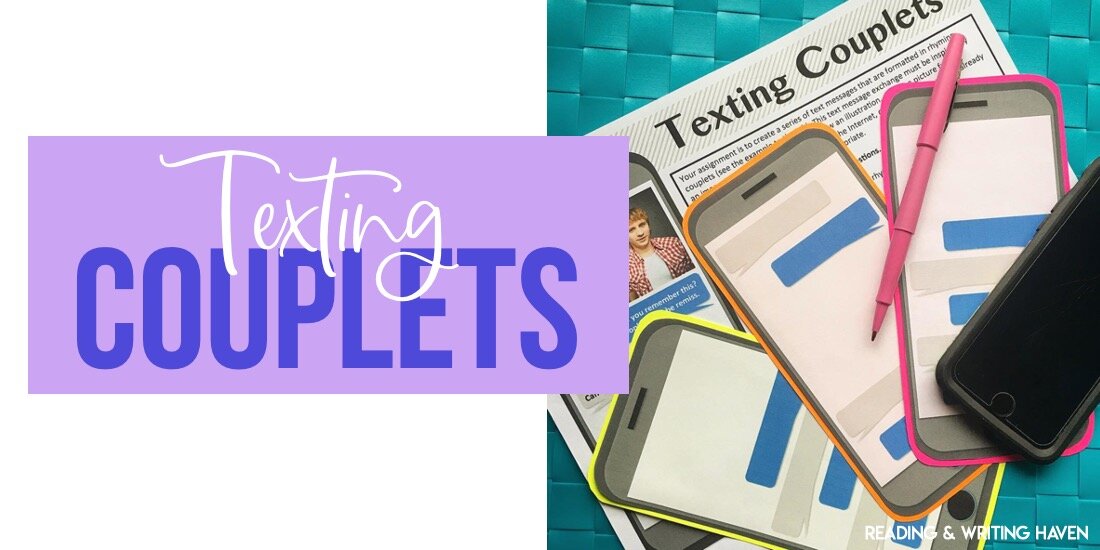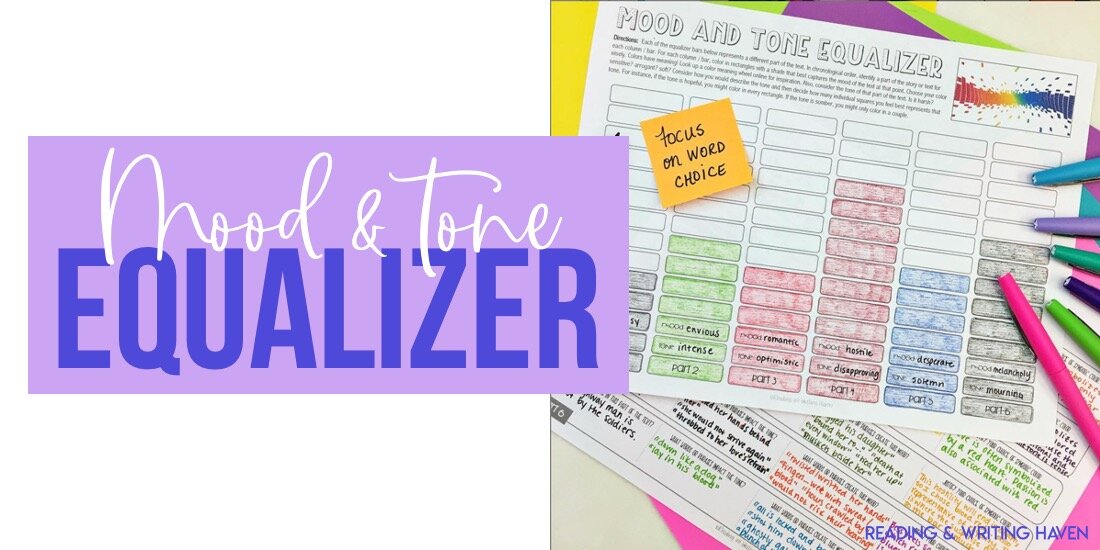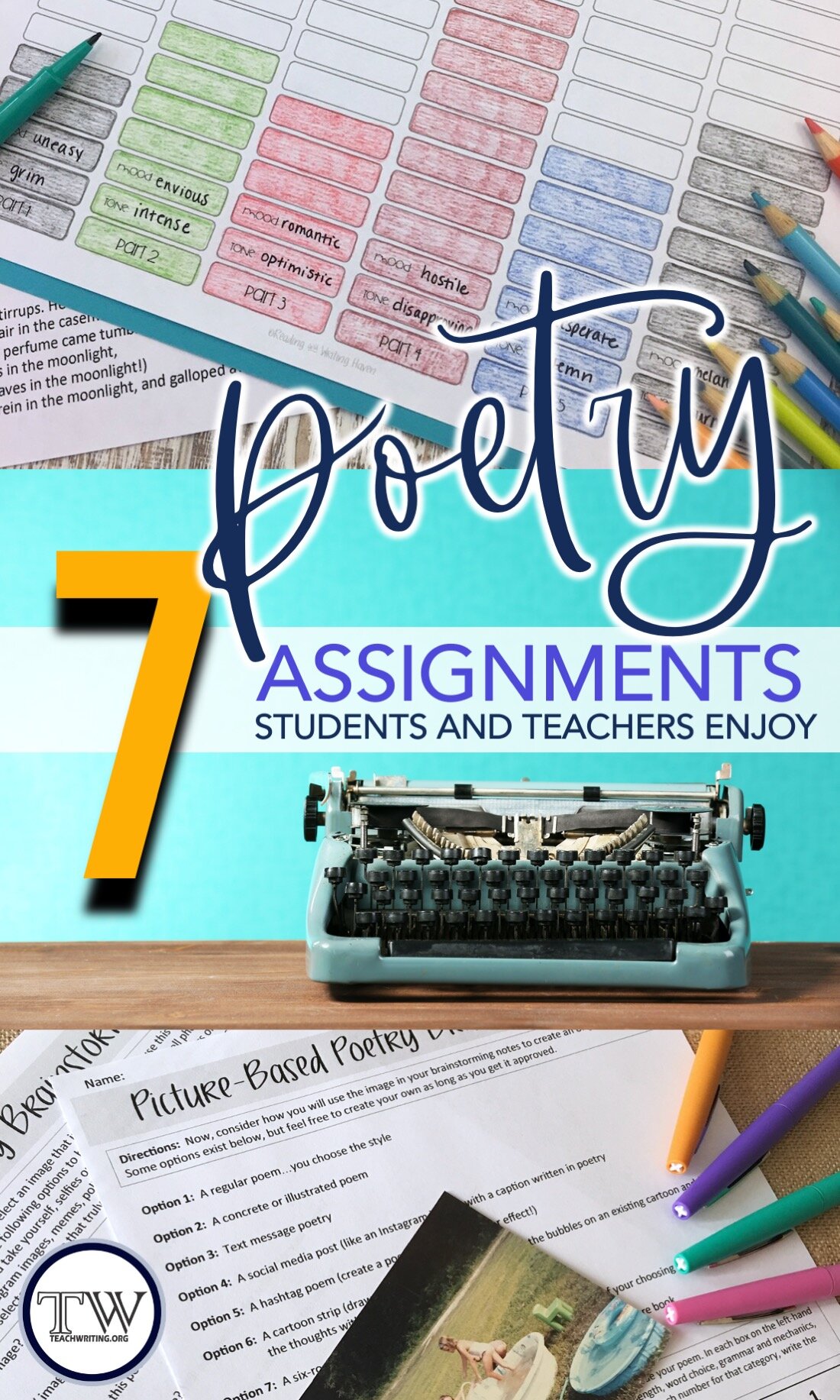7 Poetry Activities Students Love
Getting secondary students to read and write poetry (and enjoy it) can be difficult. If you're a teacher like me who doesn't love poetry as much as, well, pretty much anything else, you have to get creative. I know my students deserve my best teaching, and I can't give that to them if I'm not passionate about the topic myself. So. I've gathered some tools that engage students in meaningful (but fun!) writing and discussion. Keep reading as I reveal the poetry activities my students love the most.
ENGAGING POETRY ACTIVITIES
1. NONFICTION-INSPIRED POETRY
I enjoy shape and collage poetry, but sometimes I want to challenge my high school students more. Since concrete poetry is something that interests them, I incorporate a twist off of concrete and found poetry, which is called the crot. (It’s named as such because it’s reminiscent of a short, purposefully fragmented sentence, which students can use when composing it!)
You can read all about how to teach students to write the poem here.
I ask my students to write this creative poem based off of nonfiction source inspiration. In that way, students are creatively writing informative research texts. However, you can easily use it as a response to reading fictional works as well.
Writing a crot requires critical thinking and true reflection upon the topic and main points expressed in the original source(s). Students are asked to consider symbolism, art, and white space as they mold their snippets of thought and research into an inspiring piece of poetry. Of course, in order to intentionally break grammar rules, students have to understand them. In that way, it’s also wonderful for language enrichment and author’s craft.
2. TEXTING COUPLETS
Just to get students thinking about rhythm and rhyme, I ask them to write texting couplets. This assignment appeals to teens because - as we all know - text messaging is a language with which they are very comfortable. Asking students to write poetry? Meh. Ask them to write text messages in the form of poetry? Now we're talking.
With this task, students are writing text messages back and forth in the form of poetic couplets. I encourage them to make it sound like a conversation between friends. It's fun both to model and to watch.
Align it to standards by asking students to highlight a specific language element, like figurative language, grammar concepts, or vocabulary / word choice.
3. ANALYZE MUSIC
Intrigue even the most reluctant of students by showing them how music is poetry. Select a popular song that has literature elements you can analyze, and use this free music analysis sheet to guide discussion. Don’t forget to listen to music while you work!
4. MOOD AND TONE AMPLIFIER
Metaphors and analogies are effective teaching tools. Because students tend to wrestle with mood and tone, I came up with a different angle for them to approach these concepts. Using a music amplifier, students analyze how a story or poem’s mood and the author’s tone change throughout a literary work.
Find the assignment here. It involves critical thinking. Plus, students complete a writing extension activity that encourages them to use evidence to support their analysis.
5. PICTURE-INSPIRED POETRY
My students always produce their best work when they use images to energize their writing. In this post, you can read about thirteen different ways to use pictures to inspire students to write poetry.
Wordless picture books, old family photographs, political cartoons, famous paintings, and even hashtags can scaffold the poetry writing process by appealing to students' interests first.
If you'd like to try having your students write picture-based poetry but don't know where to start, you can download this free picture-based poetry resource to get started.
6. POETRY ONE PAGER
It’s true that poems hold so much more meaning than the — typically — short amount of words they contain. Helping students to unpack that meaning can be challenging.
Scaffold students’ analysis of poetry and music with these visually pleasing, step-by-step graphic organizers. Use them to lead students to more thoughtful extended written responses.
One way we can scaffold students’ poetry analysis is with an engaging one-pager that focuses on breaking down figurative language, form, structure, and diction. Use visually pleasing, step-by-step graphic organizers to help students prepare their literary analysis response.
If you feel your students’ responses to poetry are somewhat lacking, try approaching it from this structured, visually appealing avenue.
7. FIGURATIVE LANGUAGE GAME
Poetry is full of figurative language. To get students brainstorming before writing their own or analyzing the author's style of an existing poem, we play Figurative Language Truth or Dare. This game encourages my students to view poetry and figurative language as fun, enticing, and thoughtful.
After playing truth or dare to refresh their memories about common poetic language, students feel more confident when asked to close read a passage, looking specifically at how the poet uses literary devices to develop his or her ideas and style.
If you feel overwhelmed, underwhelmed, or disengaged at the thought of teaching poetry, don't worry. Poetry hasn't always been a highlight of my school year. Since I've begun incorporating more differentiated, engaging elements, my unit has become more meaningful and rewarding. Try some of these activities with your students, and tell us about your own go-to approaches for teaching poetry in the comments.
RELATED ARTICLES:
9 Fun Poetry Lessons to Add to Your Next Unit (Reading and Writing Haven)
Poetry Collage: Poetry Meets Art (Now Spark Creativity)
Poetry Writing that Assesses Reading Standards (Teach Between the Lines)
ABOUT THE AUTHOR:
Melissa is the creator of Reading and Writing Haven and a collaborative blogger on Teachwriting.org.
An English teacher for over a decade, Melissa is an avid reader and writer, and she loves sharing ideas and collaborating with fellow educators. Melissa use her degrees in English, Curriculum & Instruction, and Reading as well as her Reading Specialist certification to ponder today’s educational issues while developing resources to help teachers, students, and parents make learning more relevant, meaningful, and engaging.
When she's not teaching, Melissa lives for drinking a good cup of coffee, loving on her family, working out, and contemplating the structure of a sentence as well as how she can lead her students to deeper reading comprehension (Melissa's true nerdy passions).
Visit Melissa on Instagram, Facebook, or Twitter for English teacher camaraderie and practical, engaging teaching ideas.






